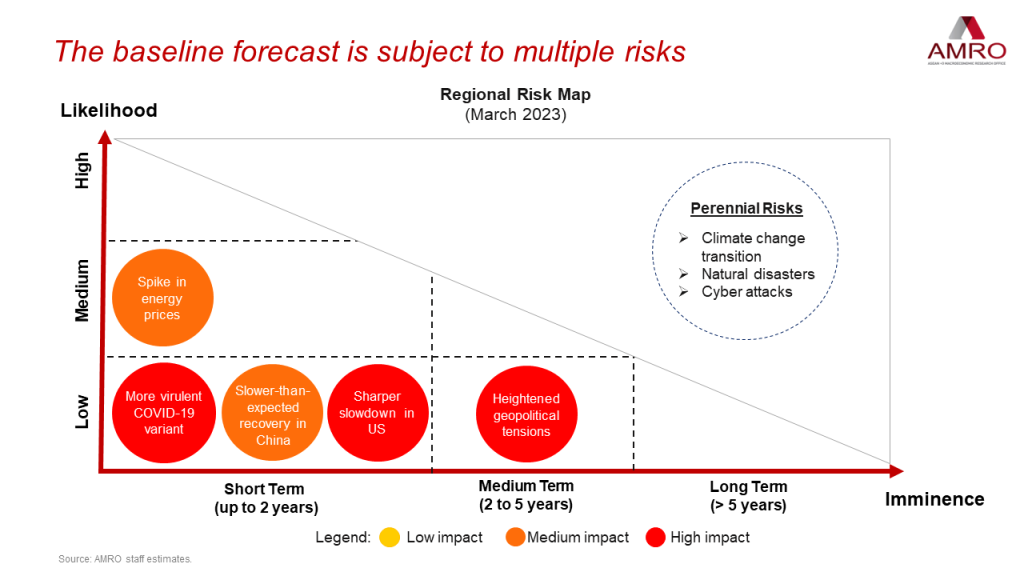ASEAN+3 Expected to Grow by 4.6 Percent led by Rebound of China
AMRO forecasts growth in ASEAN+3 at 4.6 percent this year and 4.5 percent in 2024, with growth for ASEAN at 4.9 percent and 5.2 percent, respectively.
AMRO forecasts growth in ASEAN+3 at 4.6 percent this year and 4.5 percent in 2024, with growth for ASEAN at 4.9 percent and 5.2 percent, respectively.
Thematic Chapter: On the Road to Net Zero Chapter 2 of the report focuses on climate change mitigation and transitioning to net zero, and the implications for the long-term macroeconomic and financial development of the ASEAN+3 region as a whole.
Yet downside risks abound. The region’s growth prospects could be dampened by a spike in energy prices caused by an escalation of the Ukraine crisis, or weaker-than-expected recovery in China, or a sharp slowdown in the United States.
“Drawing from the lessons learned from the Asian Financial Crisis, ASEAN+3 financial systems are now more resilient and well-regulated. However, we are living in precarious times. Policymakers need to remain vigilant and continue to rebuild policy buffers. They also need to remain flexible to extend additional support to the economy, if necessary.”
Hoe Ee Khor
AMRO Chief Economist

Press Conference: ASEAN+3 Regional Economic Outlook 2023
Panel Discussion: ASEAN+3 On the Road to Net Zero
Highlights: ASEAN+3 Regional Economic Outlook 2023
Highlights: ASEAN+3 On the Road to Net Zero